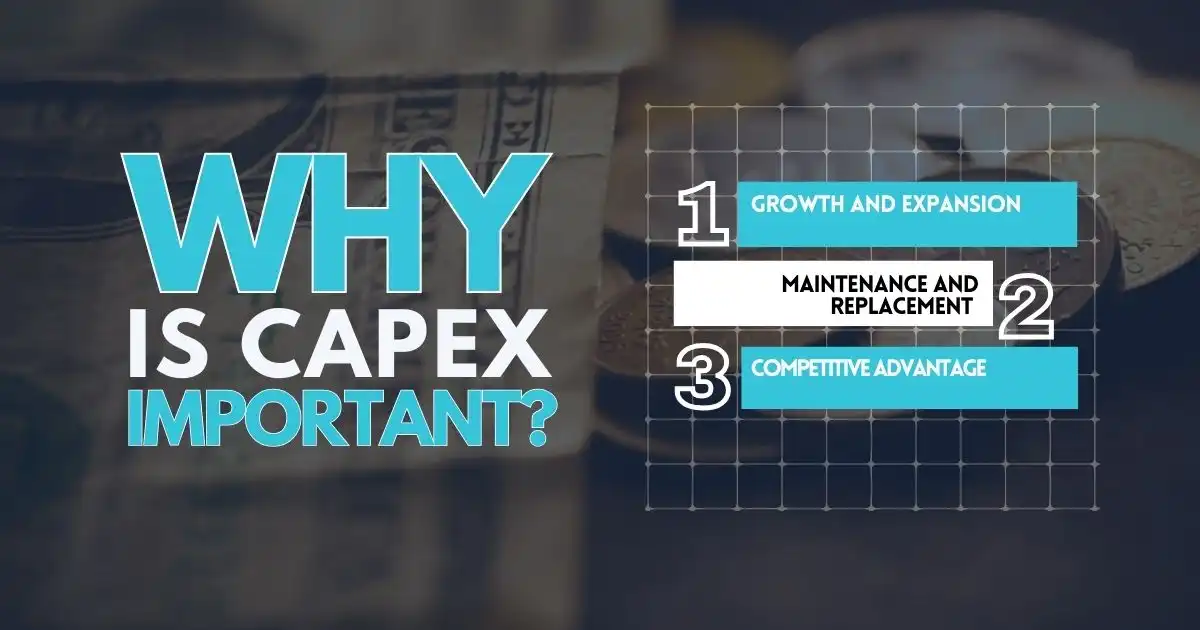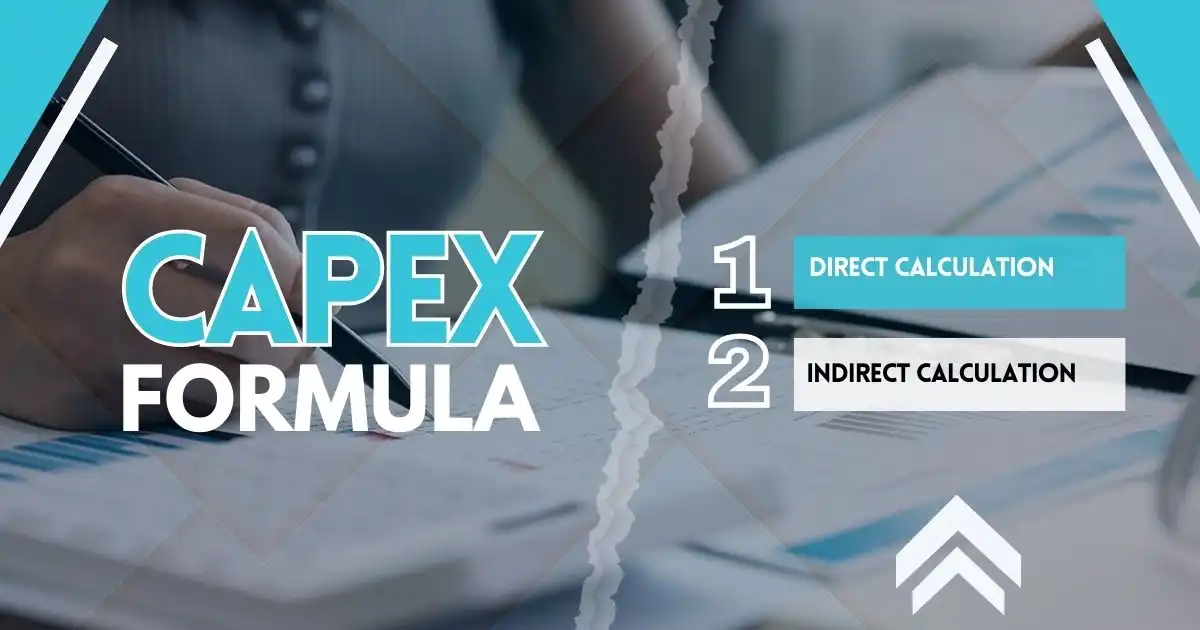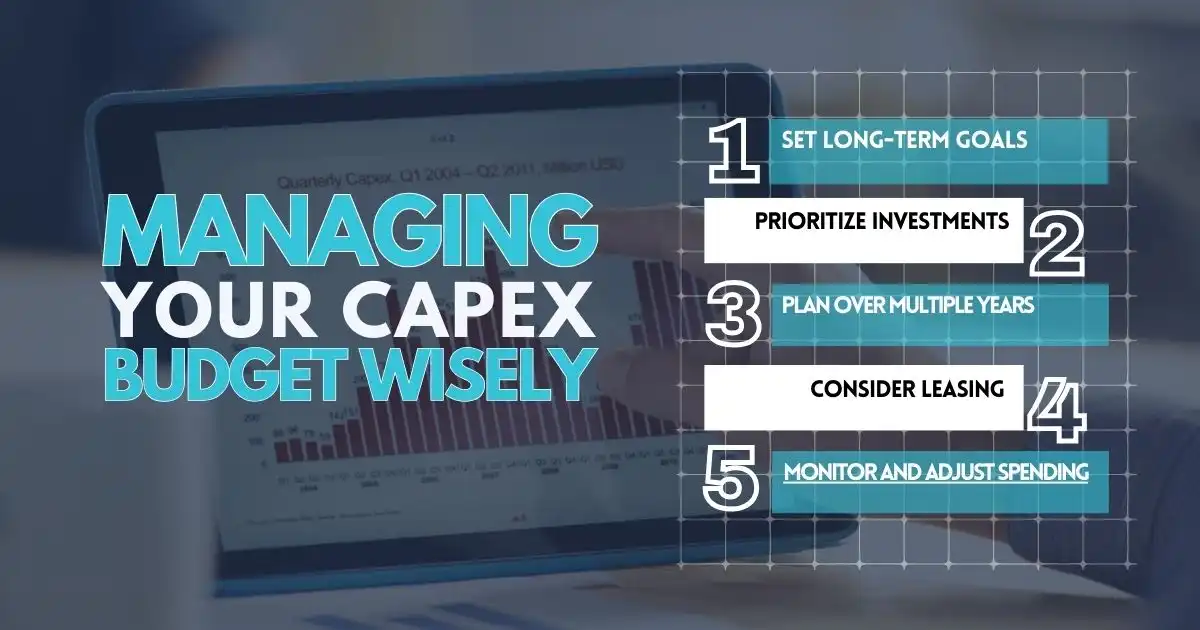“Investing is not nearly as difficult as it looks. Successful investing involves doing a few things right and avoiding serious mistakes.” — Jack Bogle.
My friend purchased land to establish a farm in the country, and he is still developing it by erecting cottages and fences to accommodate all the animals he wishes to keep there. Through integrated farming, this farm may generate revenue.
All of the investments he made in his farm had long-term goals; that is an example of capital expenditure. Money is necessary to make money, as any individual who has ever launched a business understands. You will also require a substantial initial expenditure to get your firm off the ground, depending on the kind of business you intend to establish.
Doesn’t the term itself sound serious? But for any business owner, regardless of size, knowing CAPEX is important. essential. The future of your business is shaped by strategic investments, not merely by numbers.
Understanding the Capital Expenditure (CAPEX)
In a nutshell, CAPEX is the money your company spends on long-term asset acquisition, maintenance, or upgrades. These are investments that help your business for more than a year; they are not your regular expenses. Consider them the foundation of your company’s expansion and long-term viability.
Examples of CAPEX
- Purchasing new equipment – That shiny new production machine? CAPEX.
- Constructing a new building and Expanding your operations – That’s a significant CAPEX investment.
- Investing in software – A new enterprise resource planning (ERP) system?
- Acquiring another company – A major strategic move that falls squarely under CAPEX.
- Property improvements – Renovations or expansions to your existing facilities count as CAPEX.
Why Is CapEx Important?

CapEx plays an important role in a company’s growth and long-term success. These investments help businesses expand, maintain assets, and stay competitive. Important reasons to focus on CapEx include:
Growth and Expansion
Buying new equipment, upgrading technology, or building new facilities can improve efficiency, increase production, and support new products or services. These investments help a business grow and increase market share.
Maintenance and Replacement
Over time, assets like machinery, buildings, and vehicles wear out. CapEx ensures these assets are maintained or replaced to keep operations running smoothly and prevent costly breakdowns.
Competitive Advantage
Investing in better equipment, technology, or infrastructure helps businesses improve customer experience, streamline processes, and stay ahead of competitors.
Managing CapEx properly is important because it affects cash flow, profitability, and financial planning. Businesses must budget carefully to ensure investments align with long-term goals and create value. This involves reviewing financial statements, including the cash flow statement and balance sheet, to decide the best timing for CapEx spending.
Tracking CapEx also helps financial analysts understand a company’s financial position and growth strategy. High CapEx spending may indicate a focus on expansion, while lower spending could mean the company is prioritizing short-term profitability.
CAPEX vs. OPEX
Operating expenses (OpEx) and capital expenditures (CapEx) are two types of business costs, each serving different purposes.
- Operating expenses cover everyday costs such as rent, utilities, salaries, advertising, and office supplies. These expenses are deducted from revenue in the period they occur and impact a company’s net income directly.
- Capital expenditures involve purchasing or upgrading fixed assets like property, machinery, or technology. Unlike OpEx, CapEx does not immediately affect the income statement. Instead, it appears on the balance sheet as an asset and is gradually recorded as depreciation (or amortization for intangible assets) over its useful life.
OpEx keeps a business running, while CapEx supports long-term growth and financial stability. Understanding the difference between the two is essential for financial planning and budgeting.
CAPEX Formula

There are two ways to calculate a company’s CapEx.
Direct Calculation
This method adds up all transactions related to fixed assets, such as property or equipment. Many companies use Enterprise Resource Planning (ERP) software to automatically calculate CapEx.
Indirect Calculation
When CapEx is not listed in the cash flow statement, analysts use this method. It involves adding depreciation to the change in fixed assets. Depreciation is included because it represents the decrease in the value of fixed assets over time.
The formula for calculating CapEx is:
CapEx = Change in PP&E + Current Depreciation
(PP&E = Property, Plant, and Equipment)
Example Calculation
A company has $3 million worth of fixed assets. It purchased a new machine for $500,000. In addition, depreciation of $200,000 must be recorded because assets lose value over time.
Total CapEx = $500,000 (machine purchase) + $200,000 (depreciation) = $700,000
If depreciation were ignored, someone might assume the total value of fixed assets is $3.5 million instead of adjusting for depreciation. This mistake could lead to errors in tax calculations and profitability analysis.
CapEx and Business Growth
CapEx can indicate whether a company is expanding or shrinking:
- If CapEx is greater than depreciation, the company is growing because it is investing in new assets.
- If CapEx is less than depreciation, the company may be shrinking, as it is not replacing assets as they lose value.
Managing Your CapEx Budget Wisely

Managing a CapEx budget properly is important for maintaining financial stability and ensuring funds are available for essential long-term investments. Here are some key strategies:
- Set Long-Term Goals – Clearly define your business objectives to ensure investments align with your growth plans. This helps prioritize spending on assets that support future success.
- Prioritize Investments – Allocate funds to capital assets that offer the best returns or are necessary for daily operations. Focusing on high-impact investments ensures efficient use of resources.
- Plan Over Multiple Years – Spreading capital expenditures across several years helps manage cash flow and prevents sudden financial strain. A multi-year plan allows for better resource allocation.
- Consider Leasing – Leasing equipment instead of purchasing can reduce upfront costs and spread payments over time. This approach preserves cash flow and offers flexibility.
- Monitor and Adjust Spending – Regularly compare actual spending to the budget to stay on track. Adjustments can help avoid overspending and ensure funds are used efficiently.
Using these strategies allows businesses to make smart CapEx decisions, maintain financial stability, and invest wisely in assets that support growth.
Leasing as a Smart CapEx Strategy

For many businesses, especially startups and small companies, the high cost of purchasing essential equipment can be a challenge. Leasing provides an alternative that supports CapEx management while offering key benefits:
- Lower Upfront Costs – Leasing reduces the initial expense of acquiring assets, making it easier to obtain necessary equipment without a large investment.
- Predictable Payments – Fixed lease payments help with budgeting and cash flow management, providing financial stability.
- Flexibility for Growth – Leasing keeps more cash available for other business needs, allowing companies to invest in expansion when needed.
- Maintenance and Support – Many leases include maintenance services, reducing the risk of unexpected repair costs. This allows businesses to focus on operations without worrying about asset upkeep.
Leasing is an effective way to access essential equipment while preserving cash for other business priorities. This approach helps companies grow while maintaining financial stability.
CAPEX: Planting Seeds for a Prosperous Future
Money doesn’t grow on trees, but smart investments can bear fruit for years. Capital expenditure (CAPEX) isn’t just about spending—it’s about planting seeds that shape your business’s future.
Think of it this way: A farmer doesn’t just buy land and call it a day. They build fences, dig wells, and invest in quality soil. Without these long-term commitments, the farm won’t thrive. Your business works the same way. Every dollar put into equipment, property, or technology lays the groundwork for growth.
Fail to invest, and you risk falling behind. Competitors upgrade, markets shift, and outdated systems slow you down. CAPEX is the fuel that keeps businesses moving forward.
Before you pinch pennies, ask yourself: Am I setting my business up for success, or just keeping the lights on? Smart CAPEX decisions today mean a thriving enterprise tomorrow. Don’t wait—build your future now.
FAQs
What is a CAPEX project?
A CAPEX project involves purchasing, upgrading, or maintaining long-term assets such as equipment, buildings, or technology. These investments support business growth and efficiency by ensuring infrastructure remains functional and competitive. Unlike daily expenses, CAPEX projects require significant planning and budgeting due to their long-term impact.
How does a capital expenditure plan help businesses?
A capital expenditure plan outlines future investments in assets, helping businesses allocate funds wisely. It ensures companies prioritize projects that align with growth strategies, prevent unnecessary spending, and maintain financial stability. Without a clear plan, businesses may struggle with cash flow or miss opportunities to expand.
What is included in a CAPEX budget?
A CAPEX budget details the expected costs for acquiring or upgrading fixed assets. It accounts for project expenses, maintenance, and potential future investments. Businesses use this budget to control spending, manage cash flow, and ensure long-term sustainability.
What are the key steps in the CAPEX process?
The CAPEX process includes identifying needs, evaluating options, securing funding, approving budgets, and executing the project. Companies must assess potential returns, consider long-term benefits, and monitor spending to ensure efficient capital investment.
